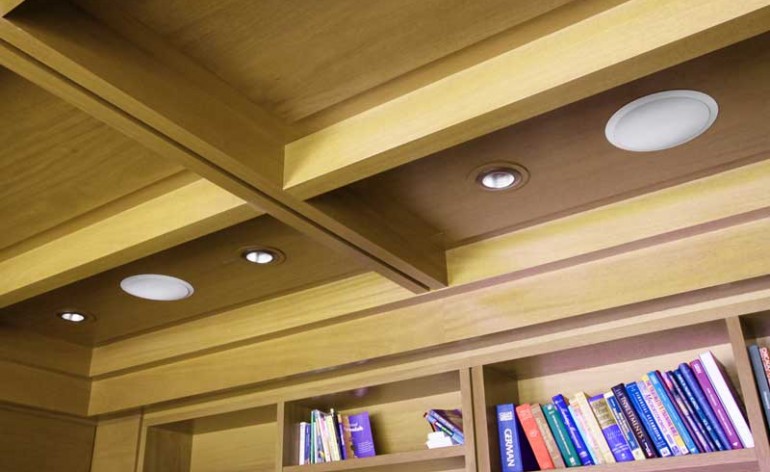Do My In-Ceiling Speakers Need to be Sealed?
With Atmos, lots of people have questions about in-ceiling speakers. If you don’t know, Dolby Atmos (and DTS:X) both include speakers above your seated position. Not many people are super excited to add more speakers to their surround sound system. For those that are, they want to make sure they do it correctly. Cutting a hole in your ceiling obviously can create problems. If there is an attic above, you need to deal with insulation. If there is a room, then there are other considerations. One main concern is whether or not in-ceiling speakers need to be sealed. And the answer is…it depends on what you mean by “sealed.” Let’s discuss.
The Short Answer…
If you are just looking for a short answer, it is yes. When you cut a hole in your ceiling or wall, it is best if anything you put in that hole is sealed. This is mostly for fire reasons (we’ll get into that below), but also for sonic ones. Not enough information? Well…
Your Insurance Cares More Than You Do
If you’ve compromised the integrity of your room by cutting a hole in your ceiling or your wall, your insurance company will care. They are usually looking for any reason to deny any claim. If there is a fire in your home, they are going to look for some reason that they shouldn’t have to cover the damage.
This is especially true in the UK. There, they have many requirements about fire hoods. These are to stop fires from spreading from room to room through holes cut for speakers. Those laws are different in other countries so your mileage may vary. If you are not sure, contact your local codes compliance office to make sure. While ensuring your insurance pays out is nice, it should be more important that you keep you and your loved ones safe.
In the USA, for example, most places require that any speaker installed in the ceiling be sealed, but not necessarily with a fire hood. Some speakers come with backboxes, but you can build your own. Why would you want to? Well…

Sonically It Is Important
Your in-room speakers all have enclosures. This helps make sure the speaker sounds the way it was intended. In-wall and in-ceiling speakers can also be made to sound better by having the back of them sealed. For an in-ceiling speaker this is especially important as you will be dealing with insulation. If you can’t find an in-ceiling speaker that is already sealed, you can often buy a backbox from the manufacturer. If they don’t offer one, you can usually contact them to find out how big of a box you should build. As a last resort if you can find no information on the preferred backbox size, a cubic foot of air is usually a good default.
Sound Leakage
If buying or building a backbox isn’t something you want to do because of the cost of complexity, let’s talk about sound leakage. Nearly as much sound is generated behind a speaker as is from the front. If your in-ceiling or in-wall speaker isn’t sealed, the back of the speaker will be sending all that sound into your attic or walls. A backbox contains this sound and keeps it from traveling to other parts of your home. Surely, that will be reason enough to…
But Do You Have To?
You live in an area where your in-ceiling and in-wall speakers don’t have to be sealed for code reasons. You don’t care about sound leakage because you live alone. Plus, you’ve contacted the manufacturer and they’ve said that sealing their speakers isn’t necessary. In fact, they claim that they were designed to be run without a backbox! Should you still include a backbox?
There is no reason you have to buy or build a backbox in this situation. We would. We know that situations change and you may someday care about sound leakage. Building codes change and we’d rather build now than try to retrofit later. And we don’t believe the manufacturer. We’ve yet to hear an in-ceiling or in-wall speaker that didn’t benefit from a backbox.
But you do you.


